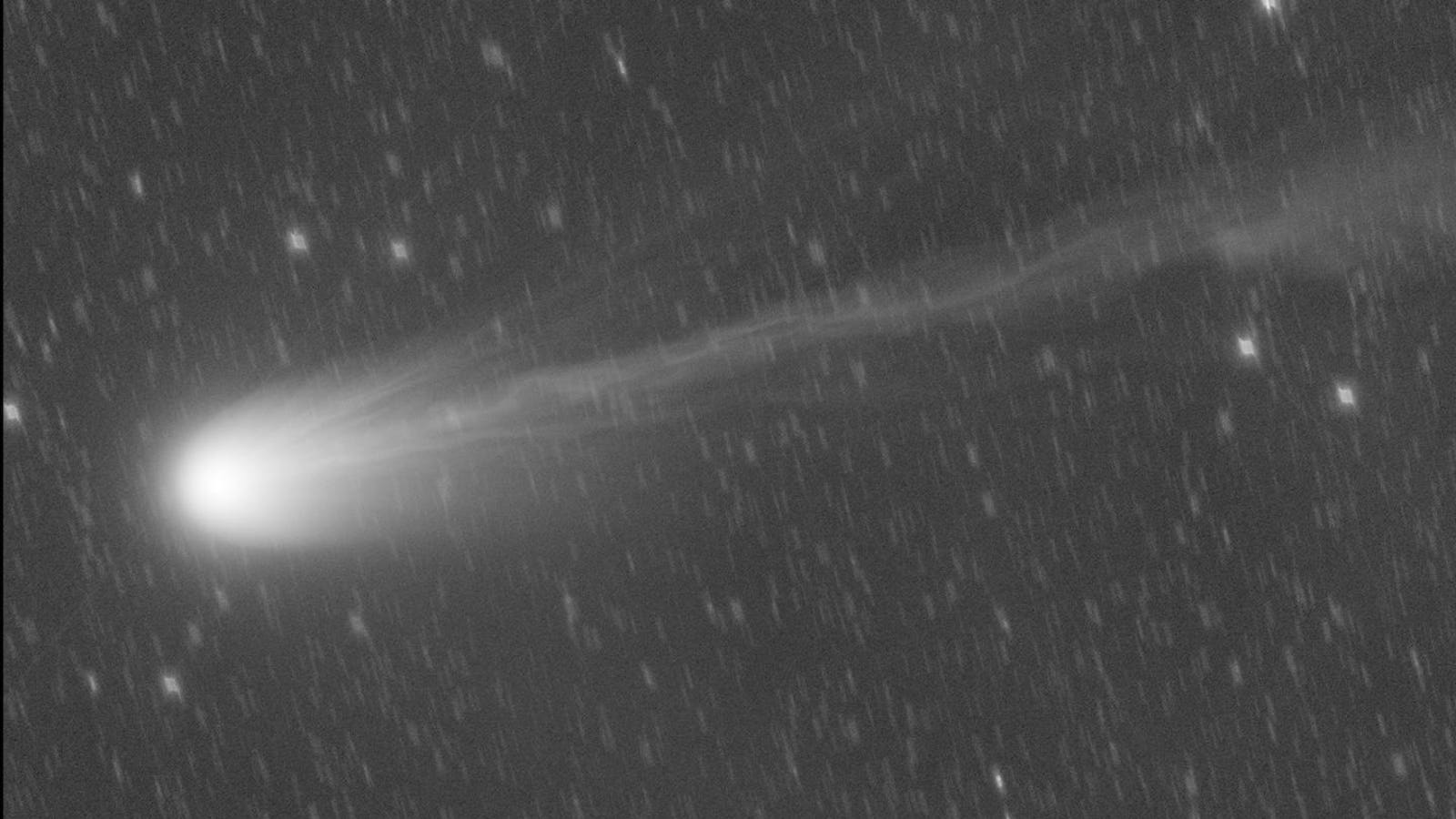
Comet 12P/Pons-Brooks: 7 Mar. 2024.
Gianluca Masi/The Virtual Telescope Project
A comet almost as famous as Halley’s comet is brightening in Earth’s early evening night sky and could be visible during April 8’s total solar eclipse, but something strange appears to be happening to its nucleus. A new image on NASA’s Astronomy Picture of the Day by Norwegian astrophotographer Jan Erik Vallestad shows comet 12P/Pons-Brooks with an impressive tail and a strong spiral of gas around its nucleus.
Latest Visit
12P/Pons-Brooks orbits the sun every 71 years and is currently on its latest visit to the inner solar system. Its highly elliptical orbit will take it closest to the sun on April 21, with its closest approach to Earth on June 2. Still, skywatchers are advised to catch a glimpse of it as soon as possible because it’s already relatively low—and sinking—in the post-sunset night sky. It’s currently in the early evening sky in the Pisces constellation, best seen with binoculars or a small telescope.
Liable To Outbursts
About 10.5 miles (17 kilometers) in diameter, Pons-Brooks has been getting brighter in recent weeks. Its present magnitude is +6—just on the cusp of naked-eye visibility—and there’s a good chance it could brighten significantly in the coming weeks. That’s not only because it’s getting closer to the sun and Earth but because it’s liable to outbursts.
Giant Iceberg
Comets are giant icebergs in space and hang out in the cold depths of the outer solar system. They typically release gas as they heat up slightly when they come close to the sun—a coma. Pons-Brooks is prone to occasionally spit ice and gas into space, increasing the size of its nucleus and boosting the comet’s brightness. That happened in the summer of 2023 when Pons-Brooks earned it the nickname the “devil comet” because of the horned-like appearance caused by a cloud of gas in front of its nucleus, as seen from Earth.
Red Gas Spiral
Over recent days, deep-sky imaging of Pons-Brooks has revealed that the comet has a light blue tail and a green outer coma. However, the spiral of red gas around the coma is thought to be caused by the comet’s rotating nuclei.
Pons-Brooks will be around 25 degrees from the sun during April 8’s total solar eclipse, though it’s likely only to be visible in binoculars, a telescope, or a long-exposure photograph—unless it outgasses at just the right time.
For the latest on all aspects of April 8’s total solar eclipse in North America, check my main feed for new articles each day.
Wishing you clear skies and wide eyes.










